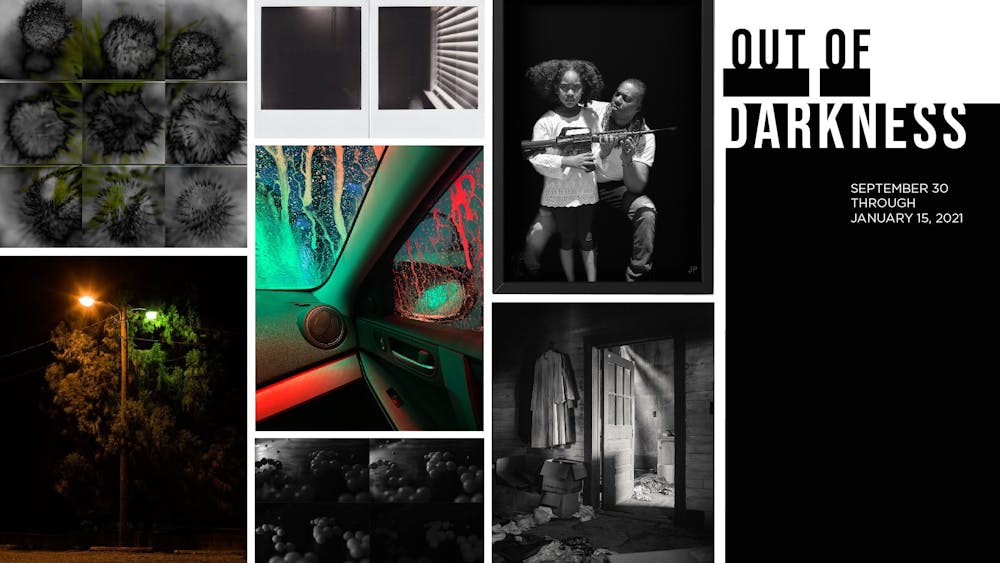"Out of Darkness," a virtual exhibition at Block Gallery in Raleigh that opened last month, features photographs and videos inspired by film noir, a style of dark Hollywood film.
The exhibition will be on display online until Jan. 15.
In addition to the low-budget aspect of film noir, the style usually incorporates the use of low-key lighting, off-angle and deep-focus camera shots and stark chiaroscuro, a technique that emphasizes contrasting light and darkness. Although there is a variety of techniques and styles used by the different artists in the exhibition, each of their images evokes a shared sense of mystery and isolation that is also common in the film noir style.
Stacy Bloom Rexrode, the curator of exhibitions and collections for Raleigh Arts, said the idea for this exhibition came from an earlier social media project focusing on how artists were adapting to life in quarantine. After seeing the pandemic’s impact on artistic practice, Rexrode decided on a theme for the exhibition.
“I thought paying homage to film noir through photography made perfect sense considering the genre first came about following World War II and was a result of artists making due with minimal equipment and limited resources,” Rexrode said.
"Out of Darkness" is juried by George Jenne, who graduated from UNC with a Master of Fine Arts in studio art in 2013 and serves as the director of Lump Projects, a nonprofit gallery in Raleigh. Jenne is a huge fan of film noir himself and said it plays a role in the basic training of every filmmaker.
“I don’t know many film veterans who can’t rattle off a long list of their favorites,” Jenne said. “I also think it’s an apt subject for the time. The art world is in crisis due to the pandemic and serious issues of equity, so purse strings are short across the board.”
As the juror of the exhibition, Jenne’s duties include viewing applications and selecting artists to be featured in the show. When considering submissions, Jenne says he focused more on the allure of the photographs rather than the quality of their execution.
“I mean, they can’t be terrible, but the concept is what’s really important,” he said. “Then I try to narrow it down to work that conveys that its maker knows something that we don’t. I’m looking for something that hints that this person is operating on a different plane.”




